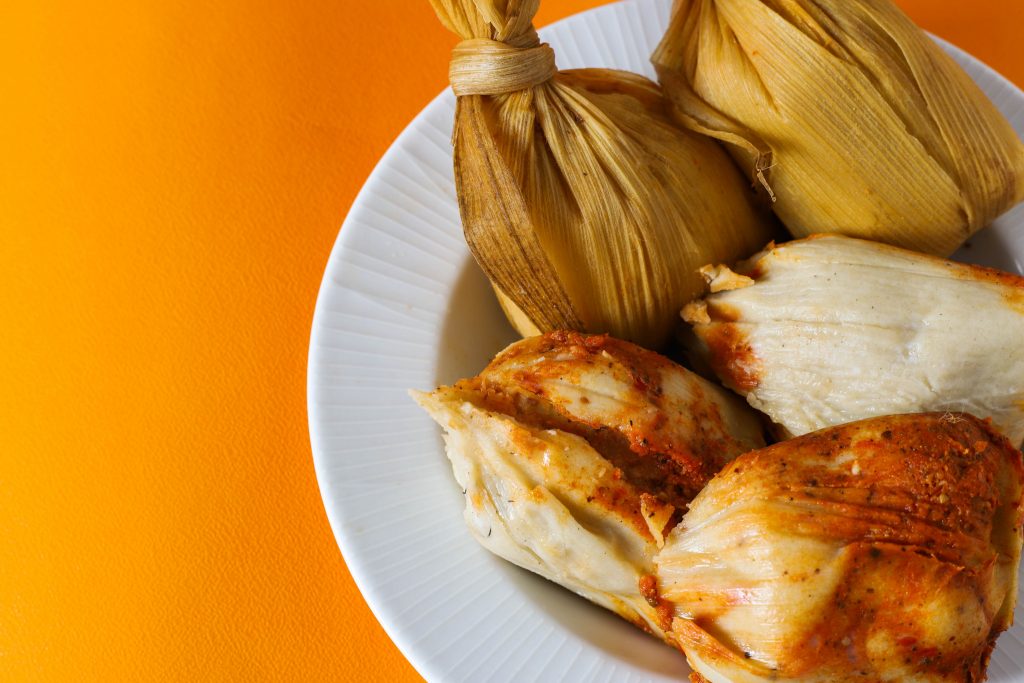This post is also available in: Español
This easy Guatemalan recipe for Frijoles Blancos con Espinazo is a favorite in many homes in Guatemala. It’s a simple dish that mixes white beans with pork spine, creating a hearty meal full of rich flavors. This dish is one of those popular Guatemalan recipes that are enjoyed at family dinners in Guatemala and is a big part of the country’s cooking culture. I will show you how to make this tasty Guatemalan white bean recipe in this article. We’ll go through all the ingredients you need and give you step-by-step instructions to cook this traditional dish at home.
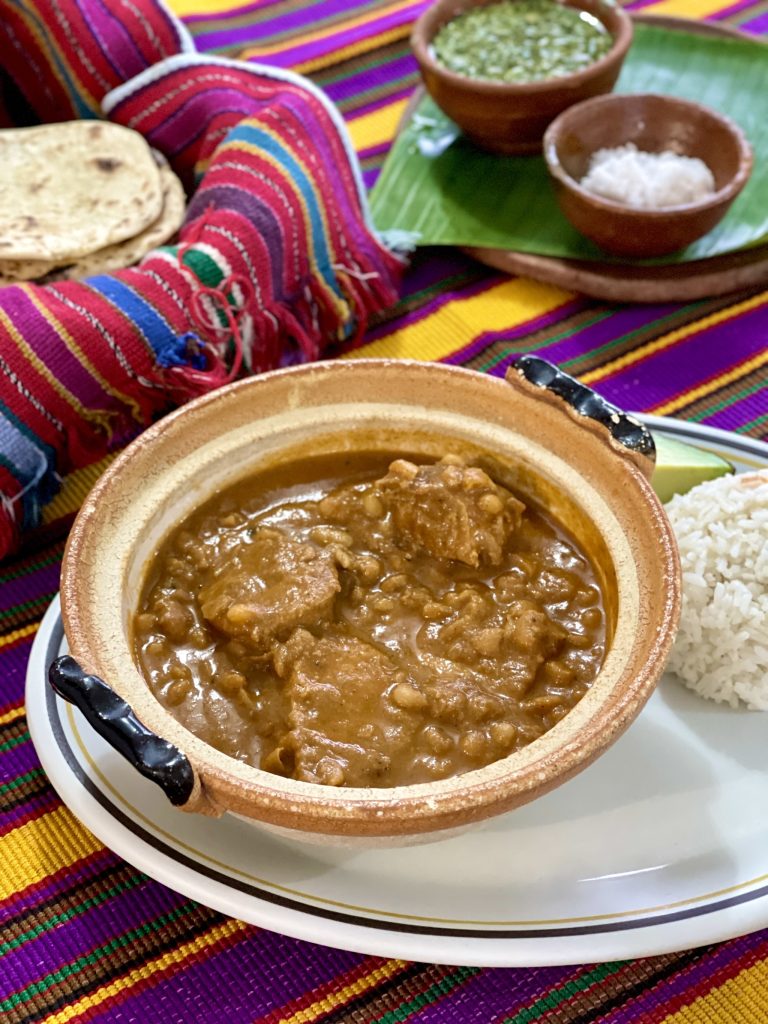
Frijoles Blancos con Espinazo is an important part of Guatemalan food. White beans, the main ingredient, are used in many dishes in Guatemala. They are known for being versatile and healthy, and they go well with this recipe’s pork spine. This dish is a great example of how Guatemalan cooking has been influenced by both indigenous and Spanish traditions. Whether you already enjoy Guatemalan dishes or are trying them for the first time, this Frijoles Blancos con Espinazo recipe is a delicious way to experience the flavors of Guatemala right in your own kitchen.
What is Frijoles con Espinazo
Frijoles Blancos con Espinazo,” or White Beans with Pork Spine, is a popular dish from Guatemala. It combines simple white beans with the rich taste of pork spine, a favorite in many local recipes. This dish is a staple in Guatemalan cuisine and is often served at family meals. In this article, we’ll look at the basics of this traditional recipe, including its ingredients and how it’s made. Usually served with white rice and freshly made corn tortillas, this dish is not only a part of Guatemala’s food culture but also a hearty and flavorful meal enjoyed by many.
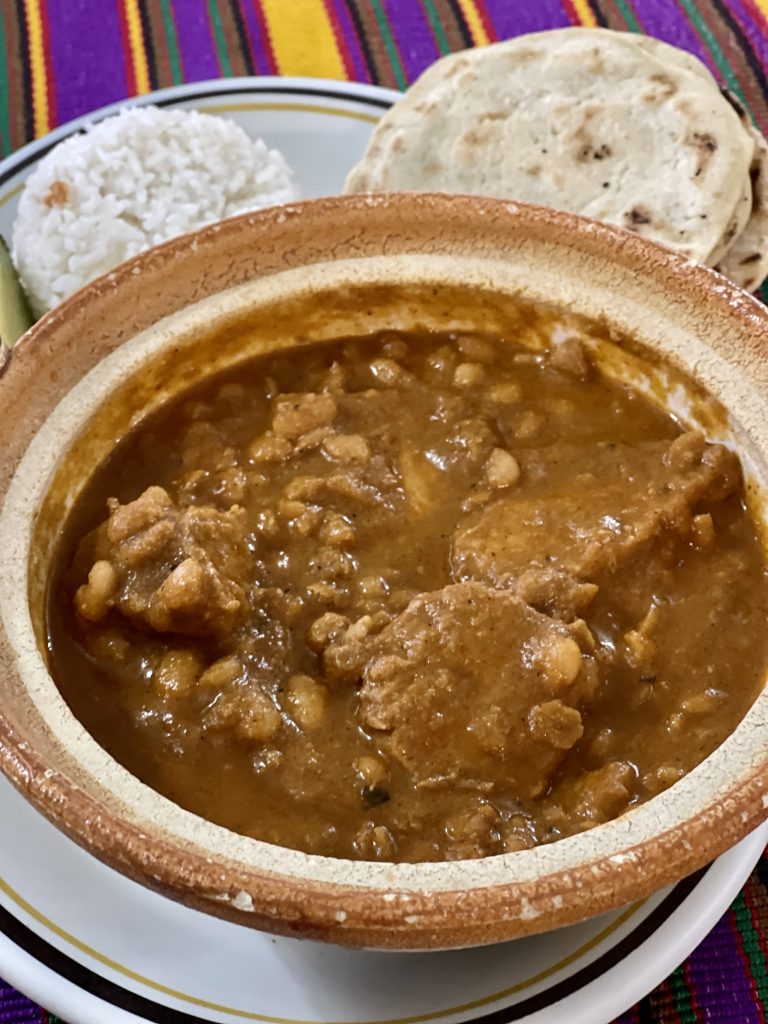
The Origin and History of White Beans
White beans, a staple ingredient in many cuisines around the world, have a rich and varied history that traces back thousands of years. Their origin is believed to be in the Americas, where they were cultivated by indigenous peoples long before the arrival of Europeans. In particular, white beans were a significant part of Mesoamerica’s diet, which includes parts of modern-day Mexico and Central America, including Guatemala.
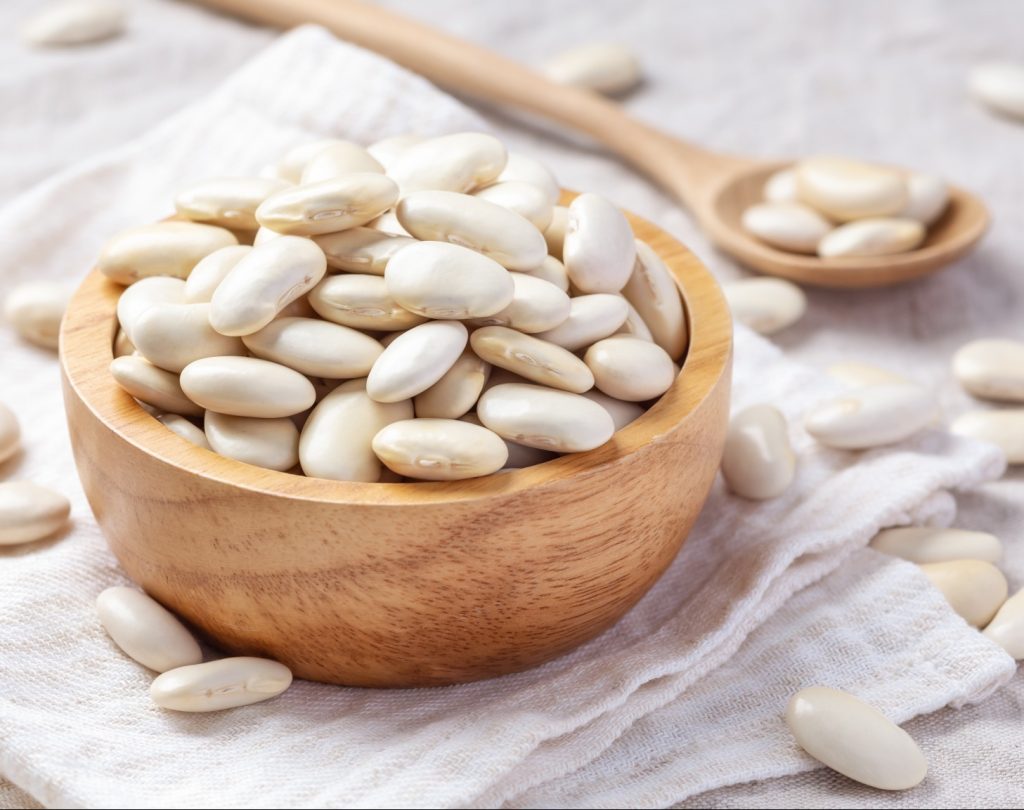
In Guatemala, white beans, known locally as “frijoles blancos,” have been a fundamental part of the diet for centuries. They were traditionally grown alongside other staple crops like corn and squash, a practice known as the “Three Sisters” agriculture, which was common among native peoples in the Americas. This method of farming allowed for sustainable growth and harvesting of these essential crops. The introduction of white beans to Europe and other parts of the world occurred after the Columbian exchange, a period marked by the widespread transfer of plants, animals, culture, and ideas between the Americas, West Africa, and the Old World in the 15th and 16th centuries.
Over time, white beans became integrated into various culinary traditions around the world, but in Guatemala, they retained a special place in the local cuisine. Guatemalan white bean recipes often feature a blend of native and Spanish influences, reflecting the country’s rich cultural history. These beans are valued for their versatility, flavor, and nutritional benefits, which are a great source of protein, fiber, and essential vitamins. Today, Guatemalan white bean dishes continue to be a cherished part of the country’s culinary heritage, symbolizing a blend of ancient traditions and cultural exchanges.
Tips for Making the Best Frijoles Blancos con Espinazo
Tips for Cooking White Beans:
- Soaking: Always soak white beans overnight before cooking. This reduces cooking time and makes them easier to digest.
- Cooking Water: Use fresh water for cooking, not soaking, to avoid bitterness.
- Seasoning: Add salt towards the end of cooking. Adding it too early can toughen the skins of the beans.
- Gentle Simmer: Cook the beans at a gentle simmer to prevent them from breaking apart.
- Checking for Doneness: Beans are done when they are tender and creamy inside. Check by tasting a few beans.
- Acidic Ingredients: Add acidic ingredients like tomatoes after the beans are fully cooked, as acidity can prevent beans from softening.
Tips for Making Frijoles Blancos con Espinazo:
- Quality of Pork: Use fresh pork spine for the best flavor. If pork spine is not available, pork ribs are a good substitute.
- Broth Preparation: Simmer the pork spine first to create a rich broth, which adds depth to the dish.
- Sautéing Vegetables: Sauté onions and garlic until golden for a richer flavor. This also helps in releasing the natural sugars, enhancing the overall taste.
- Layering Flavors: Add spices like cumin and black pepper early in the cooking process to develop a more complex flavor profile.
- Simmering Time: Allow enough time for the dish to simmer slowly. This melds the flavors together and tenderizes the beans and pork.
- Water Level: Keep an eye on the water level during cooking. The beans should be just covered, but not too submerged. Add more water if necessary.
- Taste and Adjust: Always taste and adjust seasonings towards the end of cooking. Beans often require more seasoning than expected.
- Resting Time: Let the dish rest for a few minutes off the heat before serving. This allows the flavors to settle and integrate.
- Serving: Serve with rice or tortillas for a complete meal. Fresh herbs or a squeeze of lime can add a refreshing touch to the dish.
Remember, patience is key with dishes like Frijoles Blancos con Espinazo. The slow cooking process is what brings out the rich flavors and tender textures in this traditional Guatemalan recipe.

Frijoles Blancos con Espinazo Recipe
Ingredients:
- 2 cups dried white beans, soaked overnight
- 1 lb pork spine (or pork ribs if spine is unavailable)
- 1 large onion, finely chopped
- 3 cloves garlic, minced
- 2 carrots, sliced
- 2 tomatoes, chopped
- 1 teaspoon cumin
- 1 teaspoon black pepper
- 2 bay leaves
- Salt, to taste
- Water, as needed
Instructions:
- Drain the soaked white beans and set aside.
- Add the pork spine and cover with water in a large pot. Bring to a boil, then reduce the heat and simmer for about 30 minutes to make a broth.
- In a separate pan, sauté the onion and garlic until they are soft and fragrant. Then add the chopped carrots and tomatoes, cooking for another 5 minutes.
- Add the sautéed vegetables to the pot with the pork. Stir in the soaked beans, cumin, black pepper, and bay leaves. Add enough water to cover all the ingredients.
- Bring the pot to a boil, then reduce the heat to a low simmer. Cover and cook for about 1-2 hours, or until the beans are tender and the pork is cooked through. Stir occasionally, adding more water if necessary.
- Once the beans and pork are fully cooked, remove the bay leaves and season with salt to taste.
- Serve hot, perhaps with a side of rice or tortillas. Enjoy your traditional Guatemalan Frijoles Blancos con Espinazo!
Note: The cooking time may vary depending on the type and age of the beans. It’s important to check the tenderness of both the beans and the pork as you cook.
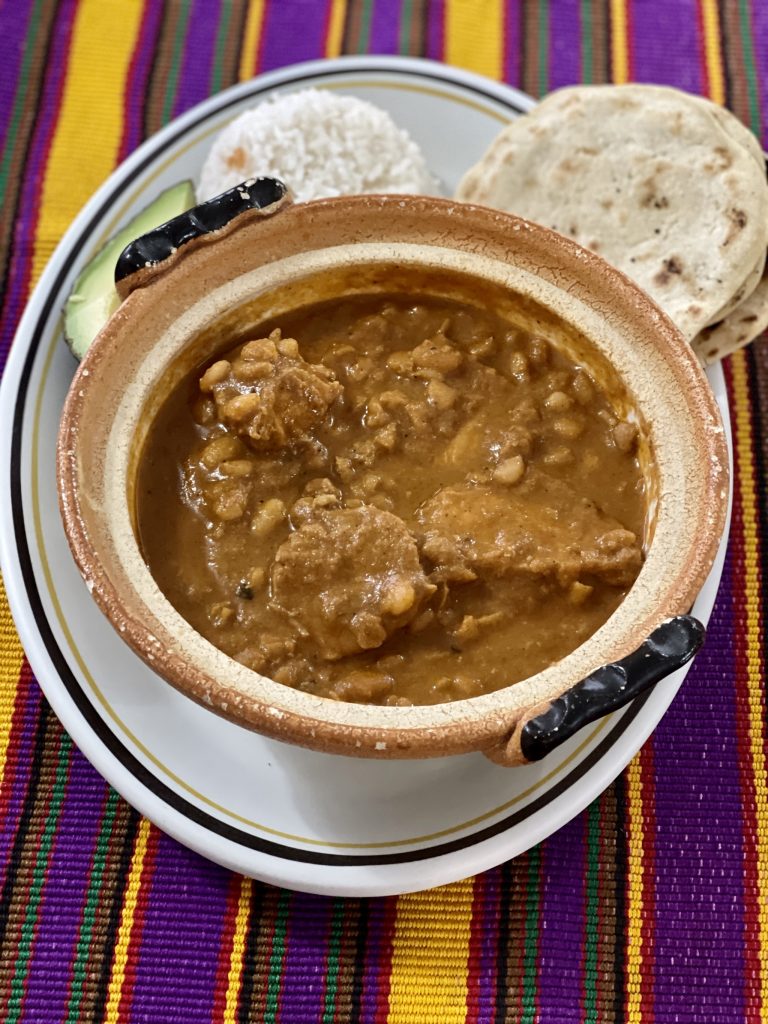
Making “Frijoles Blancos con Espinazo” in a Crockpot or an Instant Pot
Making “Frijoles Blancos con Espinazo” in a Crockpot or an Instant Pot requires some adjustments to the traditional stovetop method. Here’s how you can adapt the recipe for these appliances:
Crockpot (Slow Cooker) Method:
- Pork Preparation: If you have time, brown the pork spine or ribs in a skillet before adding them to the crockpot. This step adds depth to the flavor but can be skipped if you’re short on time.
- Sauté Vegetables: Similarly, sauté the onions, garlic, carrots, and tomatoes in a pan and then transfer them to the crockpot. This step enhances the flavor but is optional.
- Layer Ingredients: Place the soaked and drained white beans in the crockpot. Add the browned pork, sautéed vegetables, cumin, black pepper, bay leaves, and enough water to cover.
- Cooking Time: Cook on low for 6-8 hours or on high for 3-4 hours. The beans and pork should be tender when done.
- Seasoning: Season with salt towards the end of the cooking time.
Instant Pot (Pressure Cooker) Method:
- Sauté in Pot: Use the sauté function of the Instant Pot to brown the pork and to sauté the onions, garlic, carrots, and tomatoes.
- Add Ingredients: Add the soaked and drained white beans, cumin, black pepper, bay leaves, and enough water to cover the ingredients.
- Seal and Cook: Close the lid, set the valve to sealing, and cook on high pressure. The cooking time for soaked beans should be around 30 minutes.
- Natural Release: Allow a natural pressure release for at least 20 minutes before a quick release.
- Season and Serve: Remove the bay leaves, season with salt, and let it sit for a few minutes before serving.
General Tips for Both Methods:
- Bean Check: If the beans aren’t fully cooked, you can continue cooking them until they reach the desired tenderness.
- Liquid Levels: In both the Crockpot and Instant Pot, you might need less liquid than in a traditional stovetop method as there’s less evaporation.
- Adjusting Thickness: If the dish is too liquidy, you can use the sauté function in the Instant Pot or cook with the lid off in the Crockpot for a few minutes to thicken it.
Remember, every appliance can vary slightly in cooking times, so the first time you make this dish, it’s a good idea to check the doneness a bit earlier than the recipe suggests and adjust as needed.
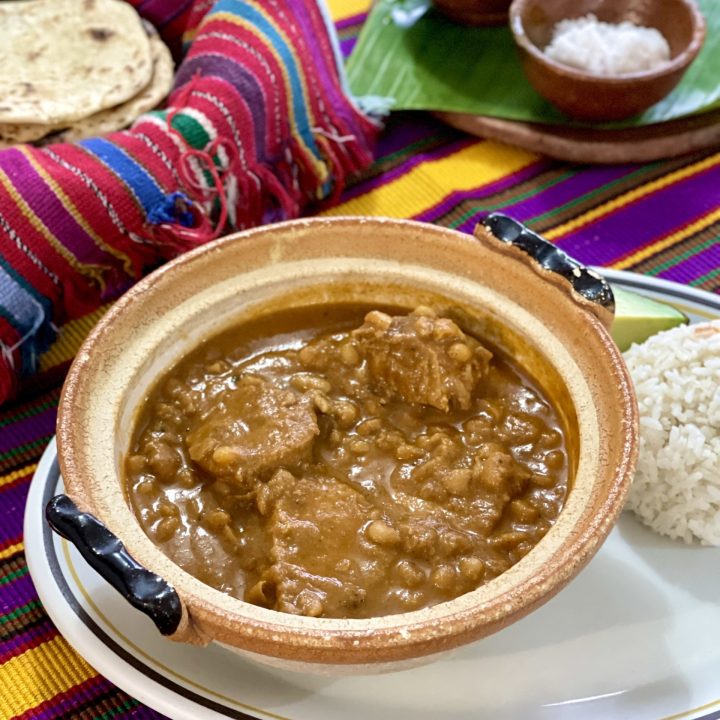
Frijoles Blancos Con Espinazo Recipe from Guatemala (White Beans with Pork)
Ingredients
- 2 cups dried white beans, soaked overnight
- 1 lb pork spine (or pork ribs if spine is unavailable)
- 1 large onion, finely chopped
- 3 cloves garlic, minced
- 2 carrots, sliced
- 2 tomatoes, chopped
- 1 teaspoon cumin
- 1 teaspoon black pepper
- 2 bay leaves
- Salt, to taste
- Water, as needed
Instructions
- Drain the soaked white beans and set aside.
- Add the pork spine and cover with water in a large pot. Bring to a boil, then reduce the heat and simmer for about 30 minutes to make a broth.
- In a separate pan, sauté the onion and garlic until they are soft and fragrant. Then add the chopped carrots and tomatoes, cooking for another 5 minutes.
- Add the sautéed vegetables to the pot with the pork. Stir in the soaked beans, cumin, black pepper, and bay leaves. Add enough water to cover all the ingredients.
- Bring the pot to a boil, then reduce the heat to a low simmer. Cover and cook for about 1-2 hours, or until the beans are tender and the pork is cooked through. Stir occasionally, adding more water if necessary.
- Once the beans and pork are fully cooked, remove the bay leaves and season with salt to taste.
- Serve hot, perhaps with a side of rice or tortillas. Enjoy your traditional Guatemalan Frijoles Blancos con Espinazo!
Notes
The cooking time may vary depending on the type and age of the beans. It’s important to check the tenderness of both the beans and the pork as you cook.
Nutrition Information:
Yield: 6 Serving Size: 1.5 cupsAmount Per Serving: Calories: 290Total Fat: 11gSaturated Fat: 4gTrans Fat: 0gUnsaturated Fat: 6gCholesterol: 67mgSodium: 158mgCarbohydrates: 21gFiber: 5gSugar: 3gProtein: 27g
Other Guatemalan Recipes You Are Sure to Love
Here are some other hearty Guatemalan recipes you might enjoy, and be sure to check out my complete guide to Guatemalan food, where you will find a full list of Guatemalan recipes from paches and stews like hilachas to drinks like horcahta and the best Guatemalan desserts including everything torrejas to plátanos en mole.
Kak’ik, Guatemalan Turkey Soup
This Guatemalan soup bursts with flavor, featuring juicy turkey, spices, and vegetables. Turkey is the star ingredient in this traditional dish, but the broth gives it its unforgettable taste. The broth is made by blending dried chili peppers, tomatoes, tomatillos, garlic, cilantro, and mint to create a rich, fragrant sauce that balances the tender turkey perfectly.
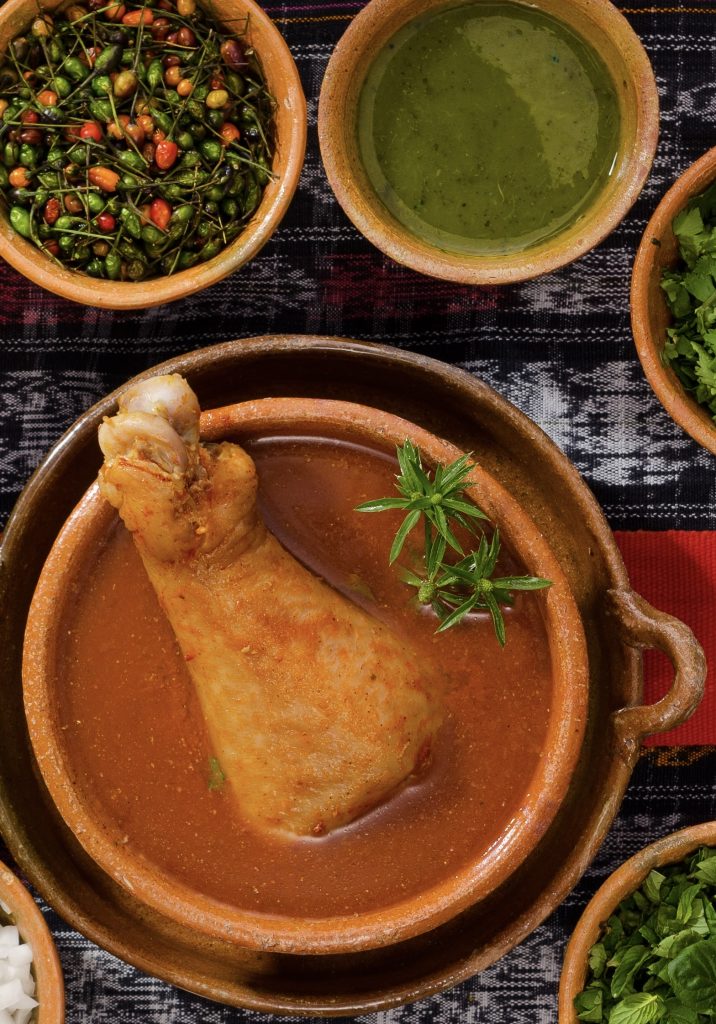
Pepián De Pollo
Pepián de pollo, or chicken pepián, is one of the oldest Guatemalan recipes. This chicken stew is rich in flavors and roasted spices. You can make it with chicken, beef, or pork (or a combination of all). You stew the meat in a tomato-based sauce with roasted seeds and peppers. Adding potatoes and carrots, with white rice as a side dish, makes this recipe a complete meal.

Subanik
Subanik is a beloved traditional Guatemalan stew renowned for its hearty, flavorful taste. It is made with three different types of meat simmered in a spicy-sweet tomato stew and chilies. Then, the casserole is seasoned with onions, garlic, and herbs and thickened with corn flour or masa. Traditionally, Subanik is wrapped in a mashan leaf nest, tied with a Cibaque rope, and steamed to perfection.
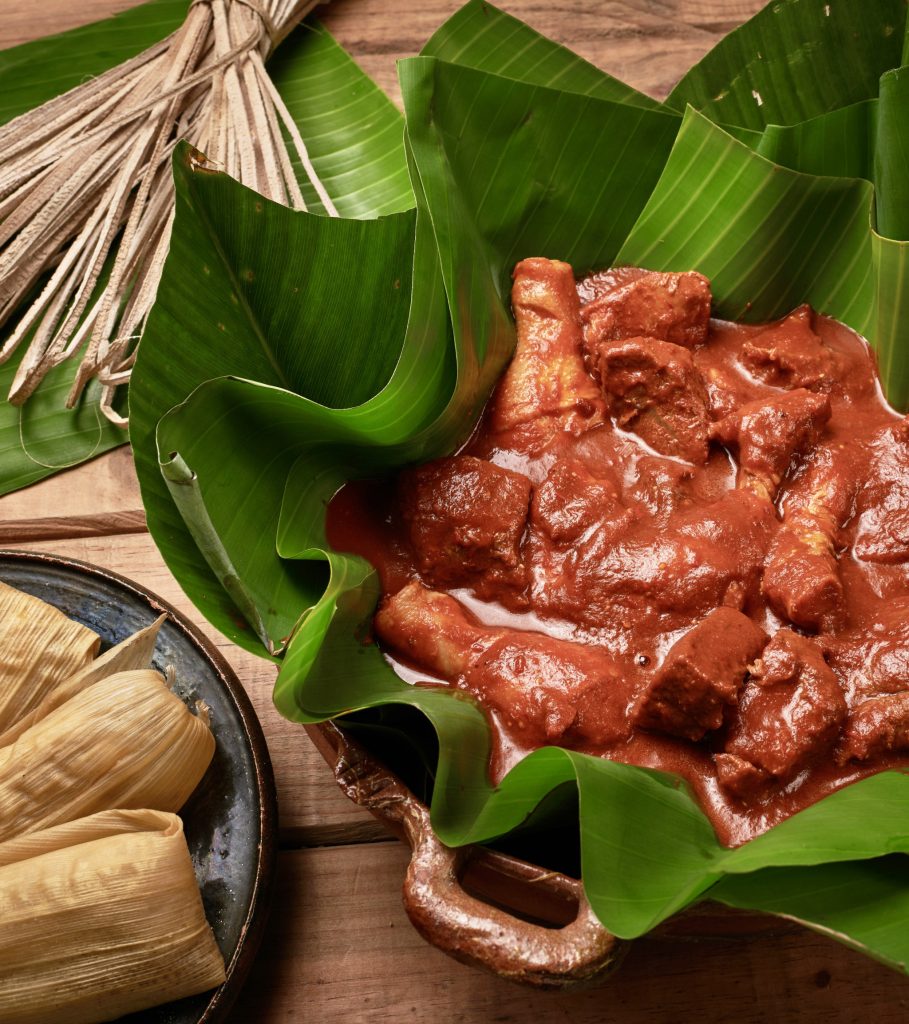
Chuchitos
Along with the legendary tamales colorados , chuchitos are among the most famous Guatemalan tamales. They are small tamales filled with pork or chicken and a tomato-based recado. Serve them with refried black beans and the classic Guatemalan “Pan Frances,” and enjoy! Check out my full list of Guatemalan tamales here!
